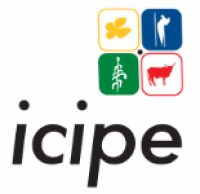Publications
Title: Insect Cytochrome P450s: Diversity, Insecticide Resistance, and Toxicological Significance
Authors: Vontas J, Balabanidou V, Vontas M, Grigoraki L, Fournier-Level A, David J-PJournal: Annual Review of Entomology (2022)
Journal Annu Rev Entomol. 2022 Jan 7;67:105–124.
DOI: 10.1146/annurev-ento-070621-061328
Open Access Link: Zenodo Link
This publication is a comprehensive review of a group of enzymes in insects called cytochrome P450s. These enzymes help insects break down both natural substances and human-made chemicals — including insecticides. While P450s are essential for insect survival, they can also give pests a major advantage by helping them resist chemical insecticides.
Thanks to modern advances in genetics and genomics, scientists are now able to study these enzymes more closely. This review explains how P450s contribute to insecticide resistance and how changes in insect DNA allow pests to survive even the strongest chemical treatments. At the same time, the article also highlights a lesser-known issue: some of the same enzymes that help pests survive insecticides can make beneficial insects, like bees, more vulnerable to harm.
Understanding how these enzymes work opens up new opportunities — both to better manage resistance in pests, and to design insecticides that are safer for helpful insects. This is especially important for sustainable agriculture and pollinator protection.
Title: Functionally characterized arthropod pest and pollinator cytochrome P450s associated with xenobiotic metabolism
Authors: Katsavou E, Riga M, Ioannidis P, King R, Zimmer CT, Vontas J
Journal: Pesticide Biochemistry and Physiology (2022)Citation: Pestic Biochem Physiol. 2022 Feb;181:105005
DOI: 10.1016/j.pestbp.2021.105005
Open Access Link: Zenodo Link
This scientific review looks at the special family of enzymes called cytochrome P450s found in pests and beneficial insects like bees. These enzymes are important because they help insects break down toxic substances — such as insecticides or plant chemicals. Some of these P450s also play a protective role in pollinators, helping them survive when they are exposed to pesticides in the environment.
The paper gathers all the known examples of P450 enzymes that have been studied in detail, focusing on those that have been tested in the lab to prove they can actually break down insecticides. It maps out their evolutionary relationships, explains how they’ve been tested, and discusses how they help insects either resist insecticides or suffer from them.
Importantly, this knowledge can help us design safer and more selective insecticides. If we understand which enzymes protect bees and which help pests survive, we can try to create products that are only harmful to pests. This would allow for better control of damaging insects while keeping pollinators and the environment safe.
Title: Identification and Functional Characterization of CYP3002B2, a Cytochrome P450 Associated with Amitraz and Flumethrin Resistance in the Major Bee Parasite Varroa destructor
Authors: Mavridis K, Tsakireli D, Vlogiannitis S, Charamis J, Siden-Kiamos I, Osabutey AF, Soroker V, Vontas J
Journal: Pesticide Biochemistry and Physiology (2025)
Citation: Pestic Biochem Physiol. 2025 May;210:106364
DOI: 10.1016/j.pestbp.2025.106364
Open Access Link: https://www.sciencedirect.com/science/article/pii/S004835752500077X
This study focuses on Varroa destructor, a parasitic mite that attacks honeybee colonies and has become a major threat to beekeeping around the world. Beekeepers often rely on two chemicals — amitraz and flumethrin — to control these mites. Unfortunately, some mite populations are becoming resistant to these treatments, making them much harder to manage.
The researchers discovered that resistance in one particular Varroa population could not be fully explained by genetic changes in the typical target of these chemicals. Instead, they found something new: a gene called CYP3002B2, which was much more active in resistant mites. This gene belongs to the cytochrome P450 family — enzymes known to help break down toxic compounds.
To test its role, scientists recreated the enzyme in the lab and found that it could indeed break down both amitraz and flumethrin into less harmful substances. This makes CYP3002B2 the first enzyme in Varroa destructor known to neutralize two unrelated pesticides — a breakthrough in understanding how mites survive treatments.
These findings open new doors for better tools to monitor resistance and develop smarter mite control methods that help protect honeybee health and ensure sustainable beekeeping practices.
Title: The Cytochrome P450 Subfamilies CYP392A and CYP392D Are Key Players in Acaricide Metabolism in Tetranychus urticae
Authors: Tsakireli D, Vandenhole M, Pergantis SA, Riga M, Balabanidou V, De Rouck S, Ray J, Zimmer C, Talmann L, Van Leeuwen T, Vontas J
Journal: Pesticide Biochemistry and Physiology (2024)
Citation: Pestic Biochem Physiol. 2024 Sep; 204:106031
DOI: 10.1016/j.pestbp.2024.106031
Open Access Link: Zenodo Link
This research focuses on the spider mite Tetranychus urticae, a tiny but devastating pest that attacks hundreds of crops worldwide. Because it can quickly become resistant to pesticides (known as acaricides), understanding how it defends itself is crucial for developing better pest control strategies.
The study investigates two groups of enzymes — called CYP392A and CYP392D — that belong to the cytochrome P450 family. These enzymes help the mite break down toxic chemicals. While the CYP392A enzymes were already known to be involved in detoxifying pesticides, this work shines new light on the lesser-known CYP392D enzymes, revealing that they are also highly active in resistant mite populations.
By analyzing 20 different spider mite strains and testing the enzymes in the lab, the researchers showed that both groups can metabolize a wide variety of common acaricides, including chlorpyrifos, carbaryl, and fenpyroximate. Surprisingly, both types of enzymes could also activate chlorpyrifos into its more toxic form — something that may affect how resistance and toxicity evolve in the field.
This dual role in detoxification and activation helps explain why some mite populations are so hard to control. The results pave the way for future gene-editing studies to pinpoint exactly how each enzyme contributes to resistance, and ultimately help in designing more effective and sustainable pest control solutions.
Title: Comparative Genomics Uncovers the Evolutionary Dynamics of Detoxification and Insecticide Target Genes Across 11 Phlebotomine Sand Flies
Authors: Charamis J, Balaska S, Ioannidis P, Dvořák V, Mavridis K, McDowell MA, Pavlidis P, Feyereisen R, Volf P, Vontas J
Journal: Genome Biology and Evolution (2024)
Citation: Genome Biol Evol. 2024 Sep 3; 16(9):evae186
DOI: 10.1093/gbe/evae186
Open Access Link: https://academic.oup.com/gbe/article/16/9/evae186/7748051
Sand flies are small insects that can transmit dangerous diseases like leishmaniasis. Controlling them often relies on the use of insecticides, but just like other pests, sand flies can develop resistance over time. This study looked at how these insects adapt to chemical exposure at the genetic level.
Researchers sequenced and analyzed the genetic material of 11 different sand fly species to learn more about the genes involved in detoxifying chemicals and resisting insecticides. They found more than 2,700 genes linked to key detox systems — including well-known families like cytochrome P450s (CYPs), GSTs, UGTs, and others that help insects break down harmful compounds.
They also looked at important genes related to the sand fly's outer shell (cuticle) and insecticide target sites — like those affecting nerve function — which are often involved in resistance.
The study showed that sand flies have diverse and sometimes expanded detox gene families, meaning they are well-equipped to survive in environments with chemical stress. This work provides a valuable genetic roadmap that can help scientists better understand how resistance develops and design smarter, more targeted ways to control sand fly populations without harming the environment.
Title: Insights in Protein Biochemistry: Protein Biophysics
Authors: Labrou NE, Kwok HF, Zhang Q
Journal: Frontiers in Molecular Biosciences (2023)
Citation: Front Mol Biosci. 2023 Apr 28; 10:1207184
DOI: 10.3389/fmolb.2023.1207184
Open Access Link: https://www.frontiersin.org/journals/molecular-biosciences/articles/10.3389/fmolb.2023.1207184/full
This editorial introduces a special journal issue that brings together exciting new methods for studying proteins — the tiny machines inside our cells that control virtually all biological processes. Understanding how these proteins move, interact, and function is critical not just for medicine, but also for fields like biotechnology and insecticide development.
The article highlights cutting-edge techniques such as:
-
Molecular dynamics simulations, which create detailed movies of protein behavior at the atomic level,
-
Cryo-electron microscopy (cryo-EM), which allows scientists to see proteins in near-atomic detail,
-
Atomic force microscopy, which can probe protein surfaces,
-
And advanced computational tools that help fit protein structures together and model how they interact.
Some of the featured studies present clever new ways to simulate the movement of complex motor proteins, use artificial intelligence for better docking of protein complexes, and track DNA replication in real time.
While not limited to insecticides, these tools are directly relevant to CypTox’s goals — especially when studying how enzymes like cytochrome P450s interact with toxins and pesticides. These biophysical methods can improve our ability to design safer, more precise pest control strategies.



















